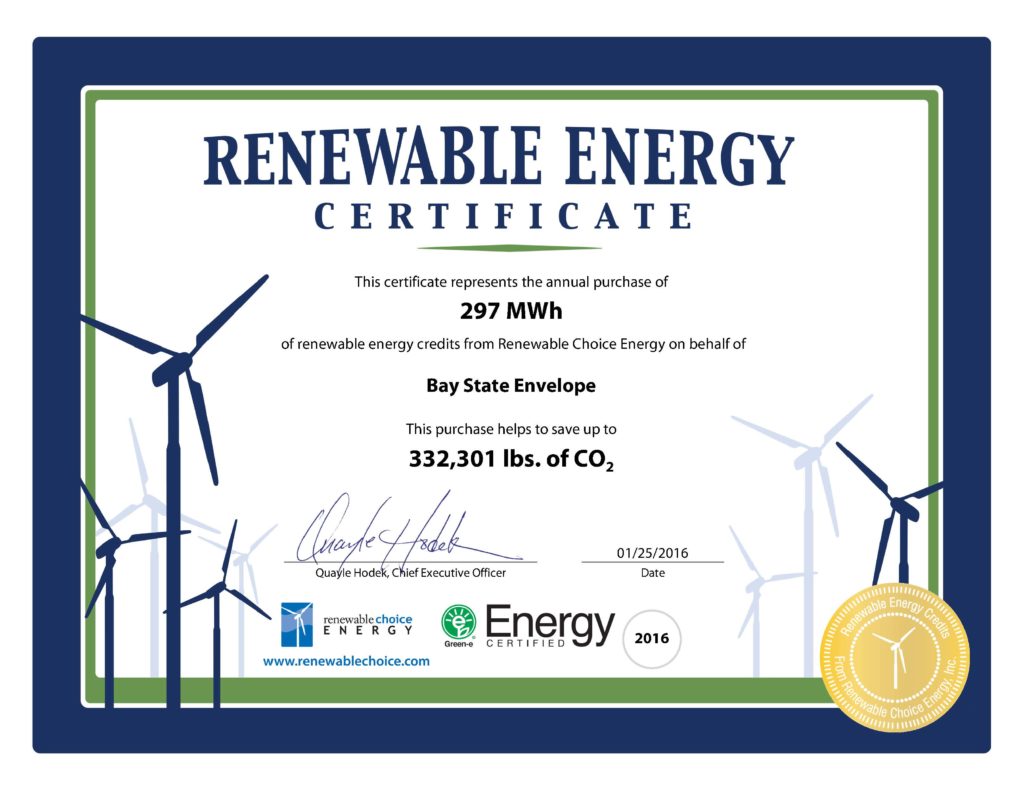Part 1: Energy Markets
In the three-ish years I’ve been living with Christian, I had not yet broached the subject of switching our electricity provider for two main reasons. First, I felt I needed to do some research to see what we would be getting, whom we would be supporting with our (likely) higher rate, and how much it would impact our bank accounts. The second reason was a smaller one, but still something that sat in the back of my mind: my husband likes to save money where possible, so I anticipated some resistance from him. I figured I would need to put together a well-reasoned argument with all the facts before mentioning the subject.
Much to my surprise, a few weeks ago he got some promotional mail from a third-party supplier advertising a green electricity plan, and instead of putting it straight in the recycling, he quietly set it on top of my mail pile. After a brief discussion in which I learned that he would be open to hearing more about our options (not just because it’s good for the planet, but because he figured it was important to me), I set to work doing the research that had been on my to-do list for a few years now.
Some History: Deregulation
There are a few things you should know before shopping around for electricity. First, your right to do this has been in place for over 20 years now. Pennsylvania is a deregulated state, meaning you do not have to buy your electricity from your local Electricity Distribution Company (EDC). For us here in Pittsburgh, that is Duquesne Light. When you read your bill, there are three components to the charges: transmission, distribution, and supply. No matter who your supplier is, you still have to pay for transmission and distribution (T&D) from your EDC. T&D charges cover the transportation of the electrons through the substations and wires all the way to our house, plus all of the associated costs to maintain that infrastructure. Deregulation means that we have the choice of where to purchase the electricity (the supply component of the bill) – we are no longer required to buy the electrons directly from the EDC.
Enter the Wild West-esque Third-Party suppliers: sometimes aggressive in sales techniques, sometimes green-washed, sometimes unclear in contract terms, and sometimes beneficial to the environment.

As I was not paying much attention to energy markets in 1996, my understanding is that the original value of switching to a third-party supplier was that it is possible to shop around to get a better deal on pricing. Electricity suppliers purchase energy on a commodities market and can get a good price or a bad price depending on how the market is behaving and how skilled they are at trading. Having a supplier focused solely on the market can be beneficial because they are working to get the cheapest possible energy and use that savings to create a more competitive product. They can concentrate on prices and not have to worry about grid logistics like the EDC does.
Today the main reason many people in my circle of friends and colleagues elect to use a third-party supplier is because of the option to support green energy sources. The blend of electricity generation sources in our regional grid is high in coal (28.68%), natural gas (31.09%), and nuclear (34.53%). (While nuclear is a zero-carbon generation source, it remains a touchy subject with most environmentalists… and a conversation for another time.) Renewable energy sources only make up a small amount of our electricity generation mix here: wind (2.63%), hydro (1.50%), and solar PV (0.26%).[1]
Some third-party suppliers promote themselves as allowing you to purchase your energy from green or renewable sources, which isn’t quite how it works…
Electron Logistics: The Grid
It is worth a brief description of how electricity moves through the grid because once generated, electrons are indistinguishable from each other. Imagine a swimming pool being filled by several hoses of different colors. If you want take a bucket of water out of the pool, you can’t select water that only came from the blue hose because the water is now all mixed together. All you can select is water. You might know that 1/3 of the water came from the black hose, and 1/3 came from the orange hose, but there is no way to tell which of the drops in your bucket came from which hose. If you really wanted only water from the blue hose, you would have to fill your bucket directly from that hose without using the pool (but that also is a conversation for another time).

The same thing happens with the electricity grid: you cannot select electrons generated only from wind turbines because there is no physical wire connecting you directly to the wind farm. You will use wind energy in proportion to how much of it is in your local grid (2.63% here), just as you will use coal energy in proportion to how much of it is in your local grid (28.68% here). The idea behind “green” plans is that some of the money in your bill will go to offset the carbon emissions released by the electricity you use and/or go to support the use of renewable sources. All of this depends on the plan, and that information is sometimes buried far down in the fine print of the Terms of Service, and sometimes not available until you provide a third-party supplier with your address, phone number, and Duquesne Light account number. (No thank you.)
Renewable Energy Certificates
Most of the plans I researched call themselves renewable/clean/green because they purchase Renewable Energy Certificates (RECs). RECs are certificates representing renewable energy that has already been generated. After a wind farm, solar farm, etc. produces 1 megawatt-hour (MWh) of energy, a certifying agency issues them 1 REC. The generator then has the option to sell that REC on the renewable energy market. Each REC has a unique number so it is identifiable and traceable. The number of Renewable Energy Credits issued in one year is equal to the number of megawatt-hours of renewable energy produced in that year – so there is a finite amount.
Going back to the swimming pool analogy for your electricity supply, since you can’t allow only renewably-generated electrons into your house, you have to somehow offset your use of fossil-generated electrons. Many third-party suppliers achieve this offset by purchasing and retiring a number of RECs equivalent to what your home uses. When a REC is retired, it means that it cannot be used again for any purpose – you have effectively “used” that renewably-generated electricity, or at least you can legally claim that you did. When a company or city sets a goal of using 100% renewable energy, most of the time they achieve that by purchasing a number of RECs equivalent to their total energy use.

Given the sheer amount of background information in this post already, I decided to break my comments on this topic into two separate installments.
(I also seriously considered calling them “Kill (the) Bill, vol. 1 & 2”.)
Anyway, tune in next week, when I will share my initial research and reactions to what’s currently available to us here in the Pittsburgh area…
Thanks for reading!
Sources:
[1] https://gats.pjm-eis.com/GATS2/PublicReports/PJMSystemMix/Filter
Based on January-December 2018 generation sources in PJM Interconnect.
[2] http://electricala2z.com/electrical-power/electrical-power-transmission-distribution-distribution-substation-components/attachment/transmission_original/
Generation, Transmission, and Distribution image.
3 Comments
John Hancock · October 15, 2019 at 12:28 pm
My wife was accosted by a rep from Inspire. After doing exactly zero research, we signed up. I’ve also done exactly zero research on my bills since then; I have no idea what affect it has had on our bill.
A friend of mine (and yours) recommended that I read this post (as well as part 2). For me to wrap my head around the REC’s, I think I’m going to need someone to sit down, hold my hand, and draw me pictures.
Does the action of buying a certificate somehow lead to an increase in the percentage of green electrons in the pool? Or is the benefit just that “some of the money in your bill will go to offset the carbon emissions released by the electricity you use”? If so, what does that really mean? How does my money help offset emissions?
Feel free to not answer these questions. Regardless, the posts were great; now I know that what I thought I knew was wildly incorrect.
Alison · October 15, 2019 at 1:05 pm
John,
Thanks so much for the compliments on these posts! It’s a complex topic, even for someone who works in the industry. I’d be happy to explain RECs to you in further detail if you like, but for now, just think of one REC as proof that one unit of energy was created by a specific renewable generation source – each is unique and proves that a renewable source put energy on the grid.
As for your question about buying a REC leading to more green electrons in the grid… no, and yes.
Short answer, no: The electricity on the grid is created by the generators that are located in our area (coal, natural gas, nuclear, and a tiny bit of renewables). Purchasing your electricity from a third-party distributor that buys RECs (or buying RECs on your own) doesn’t change the mix of electron sources in the grid.
Long answer, yes: When a REC is sold, the money from the sale goes back to the specific generator (solar, wind, etc.) that produced it. As demand for green energy rises, the price of the RECs increases too. If you choose a “green” electricity plan that offsets your usage by buying RECs (or if you buy them yourself), you are sending money back to a specific generator of green energy, and therefore supporting their business. With that support, they are able to invest in more capacity and expand their business, therefore contributing to a greater percentage of renewable generation in the grid in the long term. If your green energy plan sources nationally (as most do), you’ll be getting a lot of your wind electrons from Texas. If your green energy plan sources locally (at least one plan is PA-only), it will be more expensive, but you’ll be supporting the growth of the renewable energy industry in PA.
I hope that helps a little.
I would be curious to hear what you think of Inspire after you take a look at your bills – it’s one of the top three we were looking at when we first started talking about switching.
John Hancock · October 15, 2019 at 1:40 pm
Thanks for replying. That helped a lot.
We’re only 2 months in with Inspire. So far we’re at 0.0999 per kWh. I’m not sure if we are in an introductory period or not. I’ll report back if and when that rate changes.